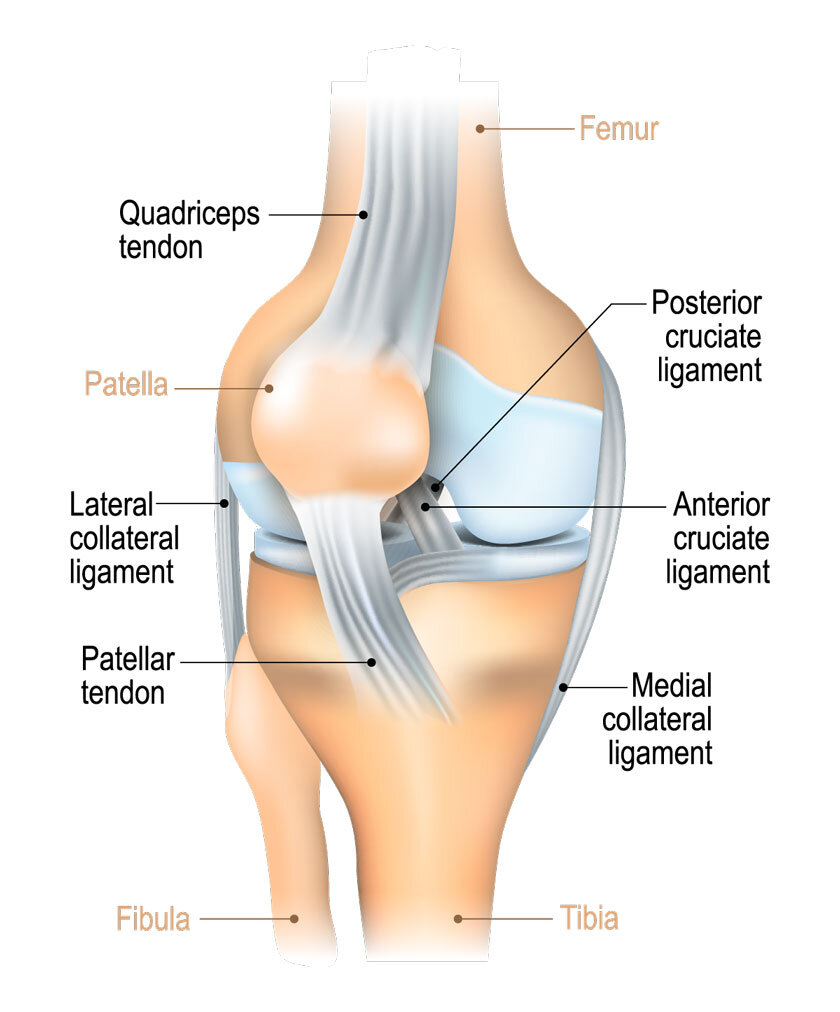Knee Pain
Your knee is the largest joint in the body made up of bones, cartilage, ligaments, and tendons. In addition to being complex in design, it is vulnerable to a number of injuries.
Many knee injuries can be successfully treated with simple measures, such as bracing and physical therapy. Other injuries, however, may require surgery.
Common Knee Injuries & Conditions
The most common knee injuries typically include fractures around the knee, dislocation, and sprains. Tears of soft tissues, like ligaments, are also common. In many cases, injuries involve more than one structure in the knee.
Pain and swelling are the most common signs of knee injury. In addition, your knee may catch or lock up. Many people also experience weakness and instability.
Arthritis Osteoarthritis
Arthritis refers to inflammation of one or more of your joints and is a common problem for many people after middle age. The most common types of arthritis are osteoarthritis (OA) and rheumatoid arthritis (RA), with OA being the most common form that affects the knee. OA commonly affects the knee joint and can be caused by a variety of factors including repeated strain on the knee, a knee injury earlier in life, being overweight, and genetics.
Learn more about osteoarthritis: Arthritis of the Knee
Articular Cartilage Related Videos
Knee Fractures
The patella is the most common bone broken around the knee. The ends of the femur and tibia where they meet to form the knee joint can also be fractured. High-energy trauma, such as falls from significant heights and motor vehicle collisions, are a major cause of knee fractures.
Common types of knee fractures include patellar (kneecap) fractures, distal femur (thighbone) fractures, and fractures of the proximal tibia (shinbone).
Knee Cap Pain Related Videos
Knee Dislocations
A dislocation occurs when the bones of the knee are out of place, either completely or partially. Dislocations can occur for various reasons including an abnormal knee structure or high-energy trauma, such as a fall, motor vehicle collision, or sports injury.
Learn more about knee dislocation: Unstable Kneecap
Torn ACL Ligament
The anterior cruciate ligament (ACL) is one of four major ligaments that stabilize the knee joint. It is the main controller of how far forward the tibia moves under the femur (how far forward you can move your lower leg). If the tibia (shin) moves too far forward, usually by a sudden motion, the ACL can tear (rupture). The ACL is also the first ligament that becomes tight when the knee is straightened. If the knee is forced past this point, or hyperextended, the ACL can also be torn.
Torn ACL Related Videos
The ACL is probably the most commonly injured ligament of the knee and is often injured by people participating in athletic activities.
Learn more about ACL injuries: Anterior Cruciate Ligament (ACL) Injuries
Meniscus Tears
There are two menisci between the shinbone (tibia) and thighbone (femur) in the knee joint that act like shock absorbers in the knee. Since two-thirds of the meniscus lacks blood flow, it is extremely rare that tears will heal on their own. In people under the age of 30, meniscal tears are often caused by a sports activity that involved motions such as twisting, cutting, pivoting, or being tackled. In people older than 30, meniscal tears generally occur as a result of arthritis or aging.
Learn more about meniscal tears: Meniscus Tears
Meniscus Tear Related Videos
Knee Therapy & Treatments
Dr. Sparks works hard to stay on top of the latest and most advanced surgical and nonsurgical treatments for knee pain. Depending on the condition, there may be several nonsurgical options for treatment before surgery would be considered.
Dr. Sparks will visit with you to assess which part of the knee hurts and the intensity of the pain. Diagnostic images such as an x-ray or MRI may also be needed in order to see inside your knee joint and look for tears, fractures, or other signs of injury.
Knee Treatment Related Videos
Sinovial Related Videos
Nonsurgical therapy and treatment options for the knee may include:
RICE method (rest, ice, gentle compression, and elevation)
Immobilization (wearing a brace)
Activity changes
Medications and/or Injections
Physical therapy
Stem cell therapy
Knee surgery may be recommended based on a variety of factors including the cause of knee pain, the condition of the joint, and the results of nonsurgical treatment options. Knee surgeries may include:
ACL & ALL Repair
PCL Reconstruction
Arthroscopic Knee Surgery
Meniscus Repair
Joint Preservation
Partial Knee Replacement
Total Knee Replacement
Schedule an Appointment
If you are experiencing knee pain or loss of function and want to restore your quality of life, an orthopedic specialist can help. Dr. Sparks, located in Conroe, can help. Call 936-539-2663 to schedule an appointment.



